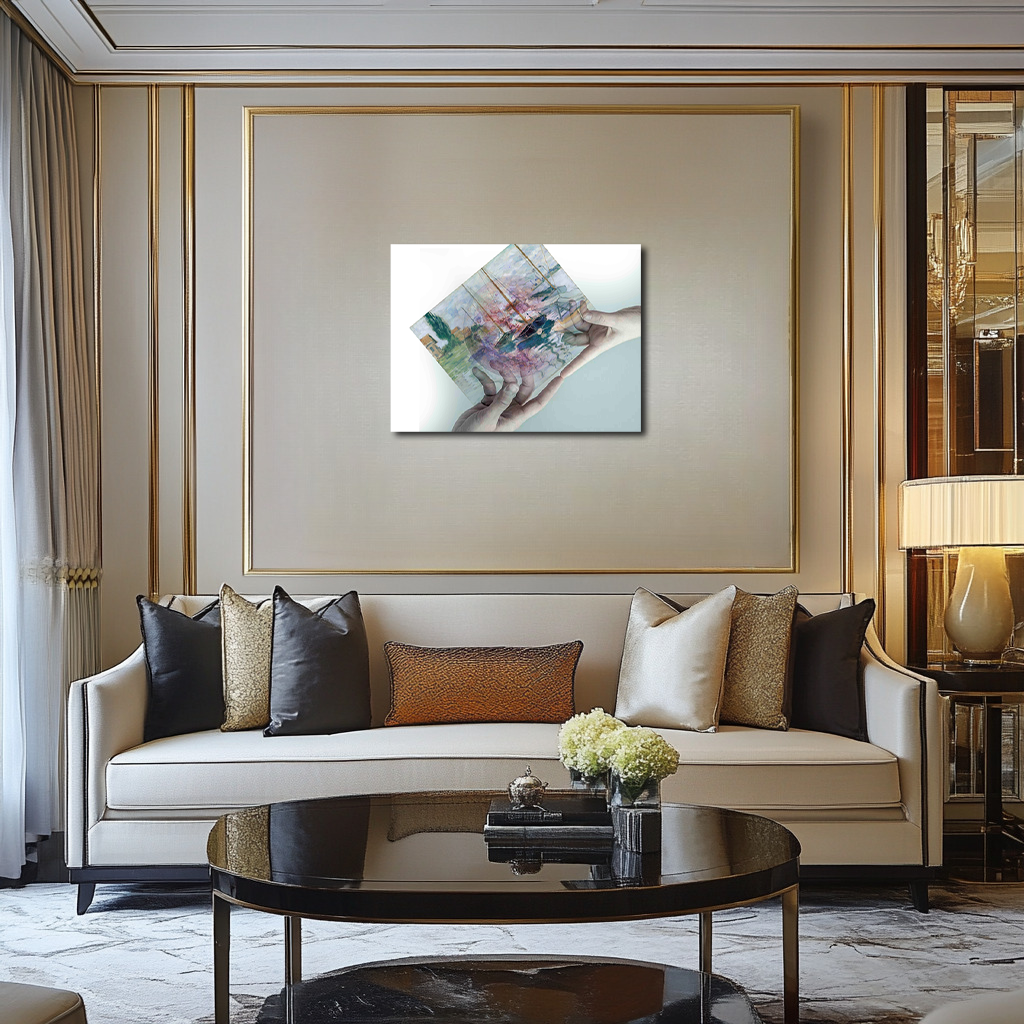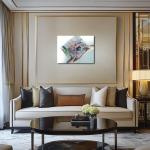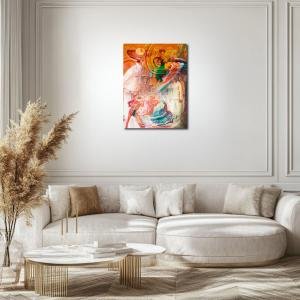Reflections Held in Time: Boats at Rest
"Reflections Held in Time" reimagines Monet’s Boats at Rest, at Petit-Gennevilliers as a fragile memory held within human hands. The painting, once a serene waterscape, now exists as a suspended fragment of time—tangible, yet fleeting. The boats remain still, yet their reflections ripple beyond the canvas, symbolizing the way art flows through history and perception. This surreal composition explores the impermanence of beauty and the intimate connection between the observer and the observed. It is a meditation on how we hold, share, and reinterpret art, bridging the past with the present in an ever-shifting dialogue.
Please see Below for Details…
Hotline Order:
Mon - Fri: 07AM - 06PM
404-872-4663
This conceptual reinterpretation of Claude Monet’s Boats at Rest, at Petit-Gennevilliers explores the fragile nature of memory and perception. The artwork, originally painted in Monet’s signature Impressionist style, captures a quiet moment by the water, where boats lie still, their reflections gently shifting upon the rippled surface. However, in this surreal reimagination, the painting itself becomes an object held within human hands, as if history is being grasped, examined, or even reconstructed.
The composition presents the artwork not as a distant landscape but as a tangible fragment of time—delicate, weightless, yet infinitely rich with meaning. The hands holding the piece appear to be offering it forward, emphasizing how art transcends generations, how it is passed from one observer to another, carrying with it the emotions, history, and impressions of its creator.
Monet’s original color palette, dominated by soft blues, gentle greens, and muted whites, remains a crucial element in this transformation. The reflective water, a central component of the Impressionist vision, now extends beyond its painted frame, merging seamlessly with the surrounding hands, symbolizing the fluidity of art and memory. The boats, once moored upon the tranquil water, now appear suspended within a conceptual space—caught between being an object of observation and a living memory.
The incorporation of transparency and layered textures in this piece serves to highlight the impermanence of vision. Impressionism was, at its core, an artistic philosophy built upon the fleeting nature of light and movement, and this reinterpretation amplifies that concept. The hands holding the image suggest an attempt to grasp the intangible, a metaphor for how we attempt to hold onto beauty, to capture something as elusive as a moment in time.
As an artist, my intention in crafting this piece was to bridge the past with the present, to illustrate how art is not only seen but experienced. Monet’s serene landscapes often invite the viewer into their atmosphere, yet here, that invitation is made literal—the painting exists within reach, as if waiting to be touched, understood, or even altered. This gesture raises questions about the role of art in our lives: Is it something we simply admire from a distance, or is it something that becomes a part of us, something we can physically hold and interpret through our own perspective?
The emotions embedded in this piece revolve around nostalgia, transience, and connection. It is an exploration of how we engage with artistic heritage, how we interact with the past, and how we reconstruct meaning through contemporary eyes. The boats, once simple resting vessels, now symbolize continuity—anchored yet timeless, moving not through the waves but through human hands, through interpretation, through imagination.
Ultimately, Reflections Held in Time transforms Monet’s Impressionist masterpiece into a commentary on art’s permanence and fragility. The past is not static; it is something we revisit, reinterpret, and pass forward. Just as water reflects the sky, so too does this artwork reflect our ongoing relationship with beauty, history, and creation.
Add your review
Your email address will not be published. Required fields are marked *
Please login to write review!
Looks like there are no reviews yet.








